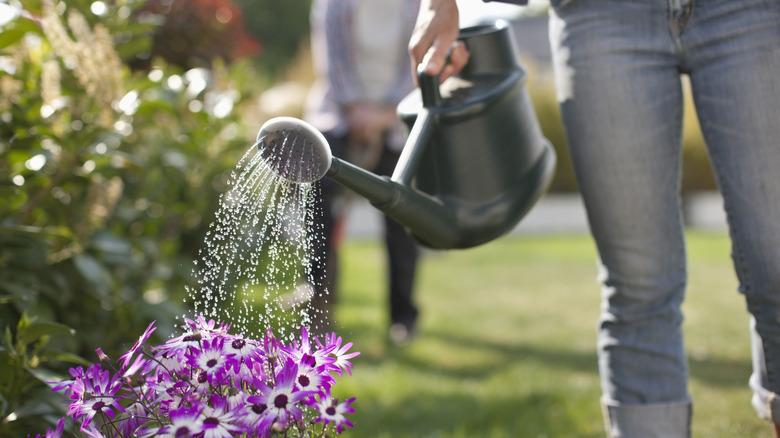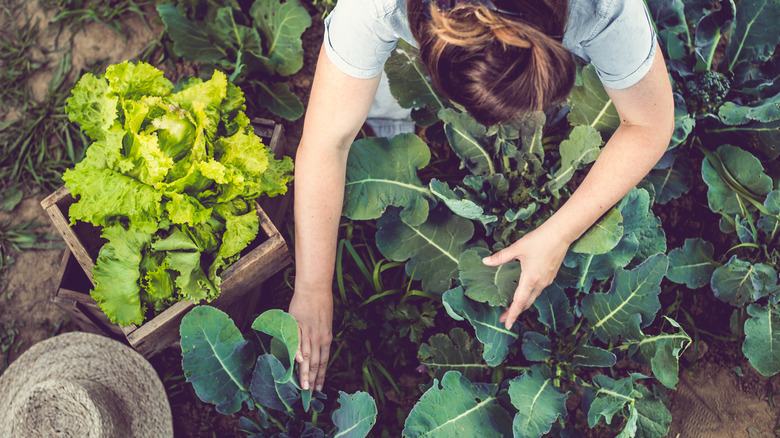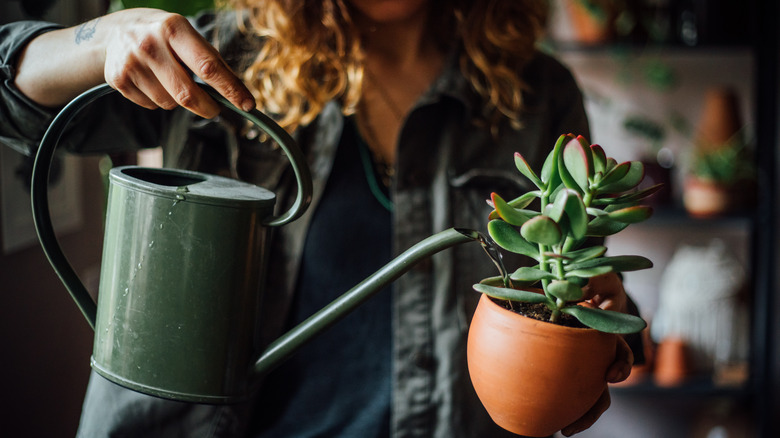The Most Important Things To Water In Your Garden If You Can't Get To Everything
When you're dealing with limited water availability, especially during a drought, a thoughtfully implemented plant watering strategy becomes not just an option but a necessity. This is often referred to as water triage, a system where you focus your watering efforts on the plants that are most at risk. Typically, this means zeroing in on new plantings and those in containers since they're generally more dependent on frequent watering and are more susceptible to stress from water scarcity. But let's not underestimate the weight of the situation.
Effective water management goes beyond just salvaging your garden for the season; it's about building resilience in your garden ecosystem. This prioritization system helps ensure that your most crucial plants get the resources they need to thrive. In regions where water is a scarce commodity, especially during protracted periods of drought, the stakes climb even higher. Insufficient water availability can jeopardize crop yields, make plants more susceptible to pest attacks and diseases, and potentially turn your once-thriving garden into a patch of missed opportunities. Thus, knowing how to effectively manage your limited water resources is crucial for your garden's productivity. Overall, it's a win-win situation: you're saving water and securing your garden's long-term health and sustainability.
Prioritize new plants and those in containers
New plants should always sit at the top of the watering hierarchy. This isn't merely because they're new additions; it's fundamentally because their root systems haven't yet expanded far enough into the soil to tap into deeper moisture reserves. These youngsters are getting acclimated to their new home and need extra care and attention. For plants in containers, the stakes are equally high. Not only is the soil volume limited, but that soil is also designed to drain well, making it less effective at holding onto water. So, whenever you water these container plants, realize that you're essentially racing against the clock. The faster drainage and the higher level of root competition in confined spaces mean these plants can go from hydrated to dried pretty quickly. This urgency intensifies if the containers are hanging or located in areas where wind accelerates evaporation, leaving them even more vulnerable.
Now, regarding perennial plants, you invest in them for the long haul; they're the mainstays that give your garden structure and continuity year after year. Failing to water them adequately can set back your garden's progress, not just for this season but for years to come. As for your vegetable plants, especially those that are growing, skimping on water now could result in lower yields and poor-quality produce. You've already put in the hard work of planting and tending; falling short on the finish line by neglecting their water needs is something you want to avoid.
How to water during triage or drought conditions
Pants usually need around a minimum of 2 centimeters of water each week, but let's dive deeper into why heatwaves change this equation. Hotter temperatures and stronger winds cause soil to lose moisture faster, making it even more essential to adapt your watering routine. Dumping a week's worth of water all at once might seem efficient, but it often results in poor absorption and increased runoff. Instead, break it down into two or three sessions per week. This gives the soil adequate time to absorb the water, keeping your plants hydrated.
Switching gears to watering tools, consider implementing a drip irrigation system or soaker hoses. These devices are efficient and pinpoint the water right where it's needed: the root zones. Running the system every five days for up to five hours can be a practical regimen. But don't forget about the timing. If you have to water manually, do it in the early morning or late evening. This strategy minimizes the loss due to evaporation. Lastly, you can't afford to overlook the risks of overwatering, even when you're combating drought and soil dryness. Soggy, waterlogged soil can cause root rot, a disaster for your plants. Keep an eye out for signs of water stress, like wilting or curling leaves, but don't jump to conclusions too quickly. These symptoms might just be your plants' natural response to the midday heat. To be certain, perform a soil moisture check for a more accurate read.


